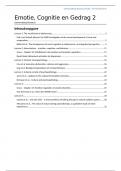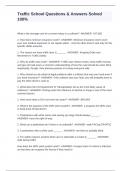Summary
Literature Summary - Emotion, Cognition and Behavior from a Clinical Perspective: Part 2 (P_BEMCG_2)
- Course
- Institution
Summary of all required literature for the exam in Emotion, Cognition and Behavior from a Clinical Perspective, part 2
[Show more]




